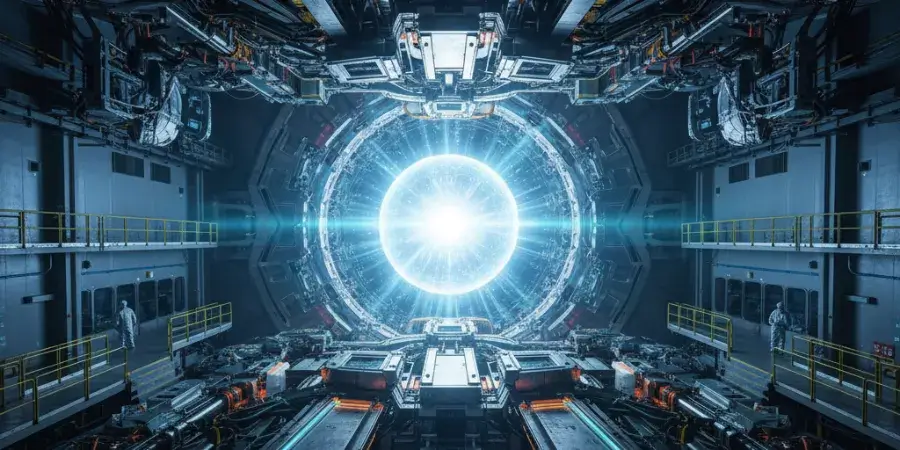China just cleared a critical hurdle in humanity’s race toward unlimited clean energy. On October 13, the Divertor Prototype for China’s Comprehensive Research Facility for Fusion Technology (CRAFT) successfully passed expert acceptance review—a milestone that positions the nation at the forefront of nuclear fusion development. This isn’t merely incremental progress; it represents the world’s largest divertor prototype with the highest thermal load capacity ever achieved, bringing the promise of “artificial sun” energy closer to commercial reality.
What Makes This Divertor Prototype Groundbreaking
The divertor may sound like obscure engineering, but it’s arguably the most punishing component in any fusion reactor. Its job: absorb extreme heat from plasma reactions reaching temperatures hotter than the sun’s core, expel fusion byproducts, and control impurities—all without failing under relentless thermal stress.
China’s prototype, developed by the Chinese Academy of Sciences’ Institute of Plasma Physics, achieved what many fusion scientists considered a formidable engineering challenge: sustained thermal loads of 20 megawatts per square meter under steady-state conditions. To contextualize that figure, it’s roughly equivalent to channeling the heat output of 20,000 kitchen ovens through a single square meter of material—continuously.
The secret lies in the flat plate design, which maintains tungsten surface temperatures below recrystallization thresholds. Tungsten, chosen for its exceptional heat resistance, can degrade structurally when temperatures exceed specific limits. By keeping surfaces within safe thermal boundaries, China’s design promises operational longevity that previous divertor concepts struggled to deliver.
The Tritium Self-Sustainability Game-Changer
Beyond heat management, China’s divertor prototype introduces an innovation with profound implications for fusion’s commercial viability: an integrated mixed divertor coating design that could boost the tritium breeding ratio by over 3 percent.
Why does this matter? Tritium is fusion fuel—and it’s extraordinarily rare. Natural tritium exists in trace amounts, making external supply chains impractical for large-scale fusion energy. Future reactors must “breed” their own tritium by converting lithium through neutron bombardment during fusion reactions.
A 3 percent improvement in breeding efficiency might seem modest, but in the context of achieving tritium self-sustainability—the holy grail allowing reactors to generate their own fuel indefinitely—this represents a meaningful step toward closing the fuel cycle. Without self-sustaining tritium production, fusion energy remains dependent on external supplies that can’t scale to meet global energy demand.
China Achieves Full Divertor Self-Sufficiency
Chinese researchers emphasized that this breakthrough establishes complete self-sufficiency in divertor research and development—a strategic advantage as geopolitical tensions increasingly impact technology supply chains.
The implications extend beyond fusion energy. According to project officials, technologies developed for the CRAFT divertor hold application potential across:
- Aerospace thermal management systems
- High-end medical imaging equipment requiring precise temperature control
- Industrial electronics in extreme environments
- New energy vehicles with advanced battery thermal systems
This dual-use strategy mirrors China’s broader approach to strategic technologies: develop capabilities with immediate commercial applications while advancing long-term scientific objectives.
EAST Tokamak Continues Shattering Records
The divertor milestone arrives amid a string of Chinese fusion achievements that have repositioned global expectations.
China’s Experimental Advanced Superconducting Tokamak (EAST), often dubbed the “artificial sun,” shattered world records in January 2025 by sustaining high-confinement plasma for 1,066 seconds—nearly 18 minutes of continuous fusion conditions. This obliterated the previous 403-second record set in 2023, demonstrating China’s rapidly accelerating technical capabilities.
Meanwhile, the BEST (Burning Plasma Experimental Superconducting Tokamak) project reached another construction milestone on October 1, 2025, completing installation of its 400-ton cryostat base—the foundation supporting a 6,700-ton reactor system designed to achieve self-heating plasma conditions.
These parallel programs create a cascading knowledge ecosystem. Insights from EAST inform BEST design decisions, while both projects feed engineering requirements into CRAFT component development—creating a virtuous cycle accelerating China’s fusion timeline.
CRAFT: The 40-Hectare Fusion Testing Ground
The CRAFT facility itself represents China’s most ambitious fusion infrastructure investment. Spanning 40 hectares in Hefei, Anhui Province, the complex is scheduled for completion in 2025 and will house 20 specialized installations dedicated to testing technologies for China’s planned CFETR (China Fusion Engineering Test Reactor).
CRAFT’s mission: validate every critical system before committing to full-scale reactor construction. The divertor prototype that just passed review is one of 19 key subsystems undergoing rigorous development and testing—each addressing specific engineering challenges that have historically plagued fusion reactor designs.
By building a dedicated testing ecosystem rather than iterating on operational reactors, China aims to compress development timelines and reduce costly design mistakes. Industry observers note this methodical approach contrasts with some Western fusion efforts that rely more heavily on computational modeling with less extensive physical prototyping.
What This Means for Global Fusion Energy Competition
China’s divertor breakthrough underscores a broader shift in the global fusion landscape. Once dominated by European and American research programs, fusion leadership now increasingly includes Asian nations making substantial infrastructure investments.
The successful divertor review demonstrates China’s capacity to not just participate in fusion research but advance it—tackling engineering challenges that require both scientific understanding and manufacturing precision. As CRAFT nears operational status and CFETR design matures, China positions itself to potentially deploy demonstration fusion reactors on competitive timelines with Western counterparts like ITER.
For policymakers, investors, and energy strategists worldwide, the message is clear: fusion energy’s pathway to commercialization is accelerating, and China intends to be first to market with technologies that could reshape global energy economics for generations.
The artificial sun’s heat is getting harder to ignore.









